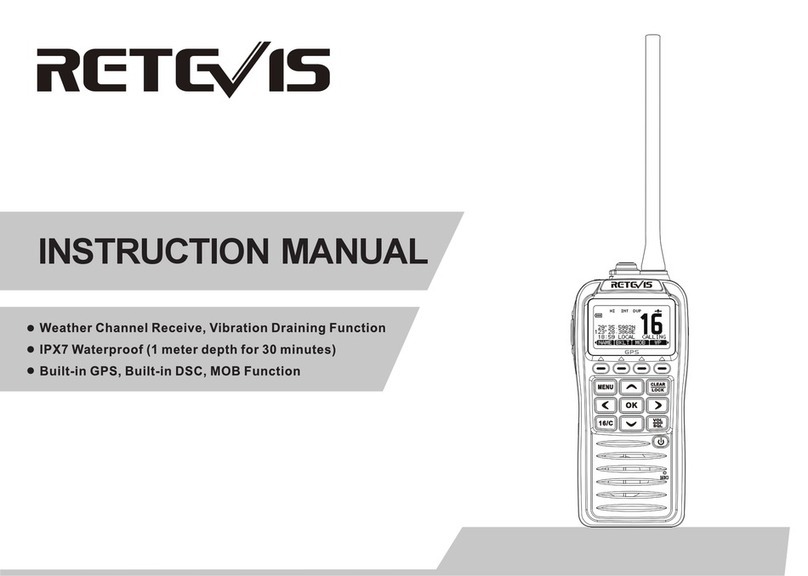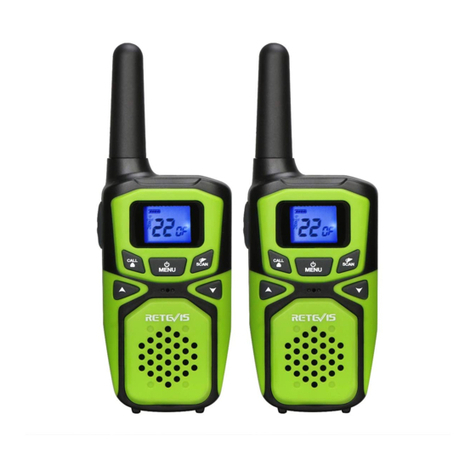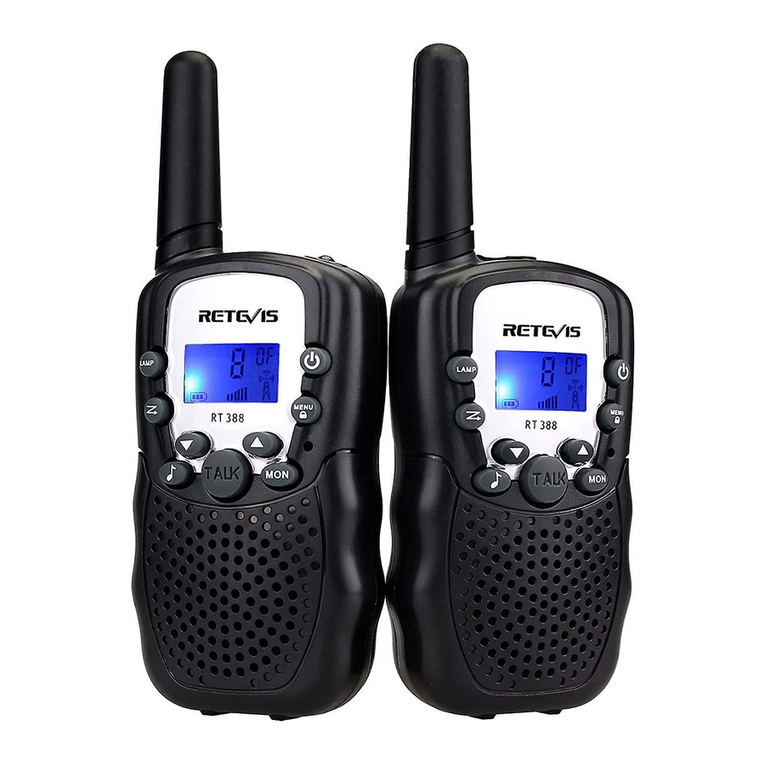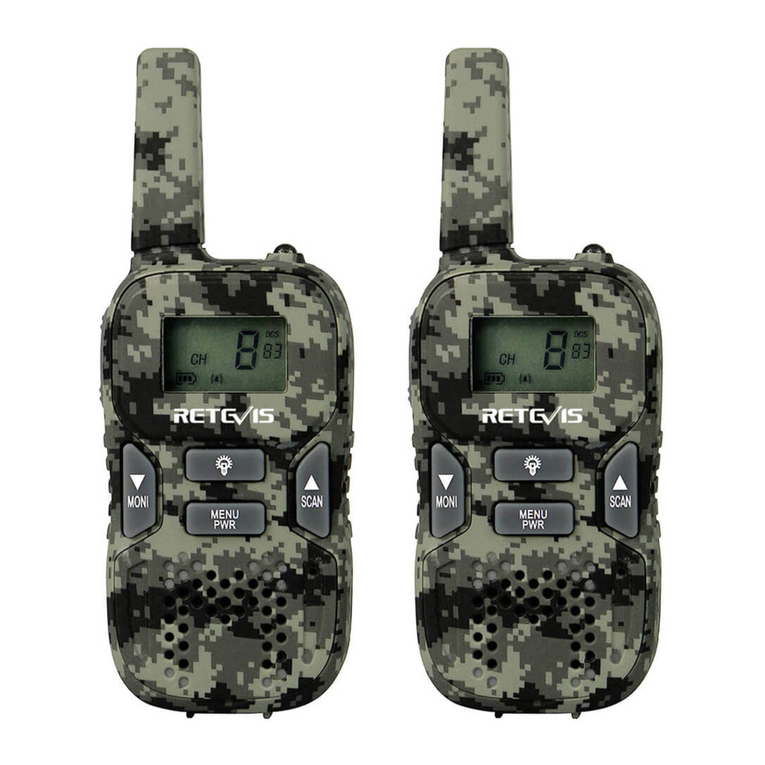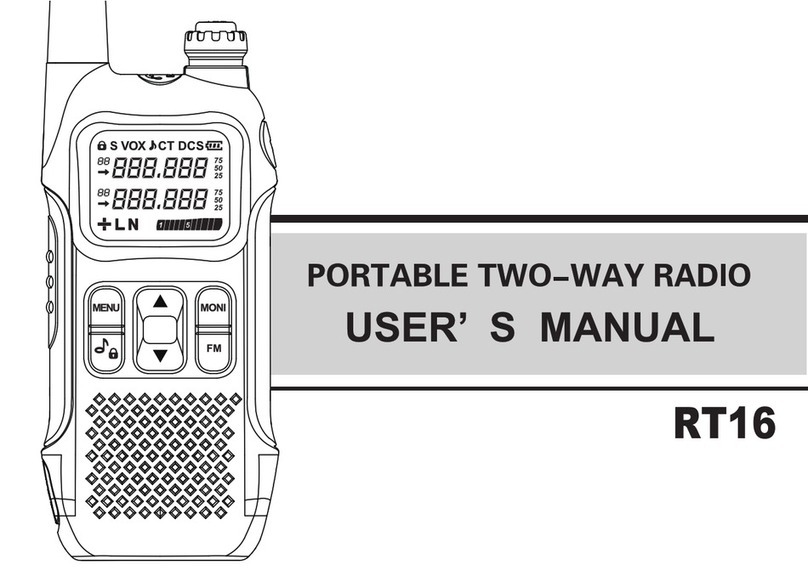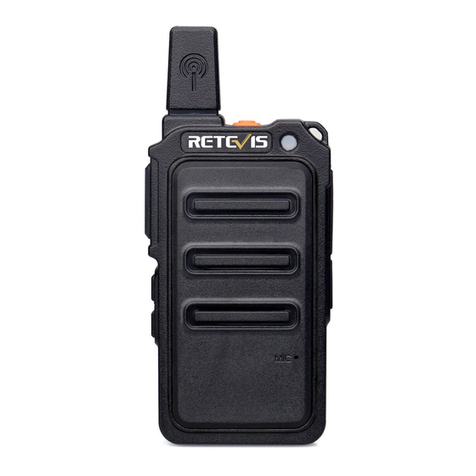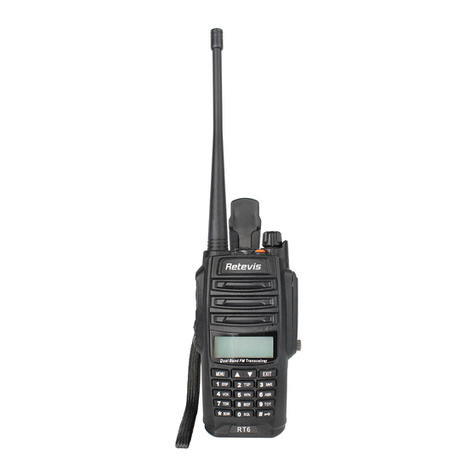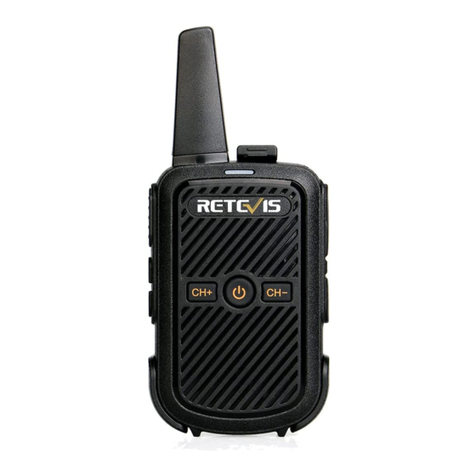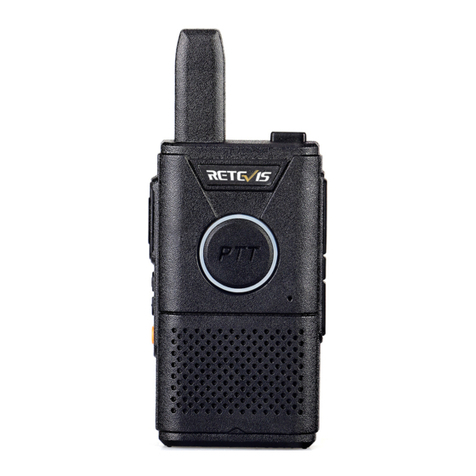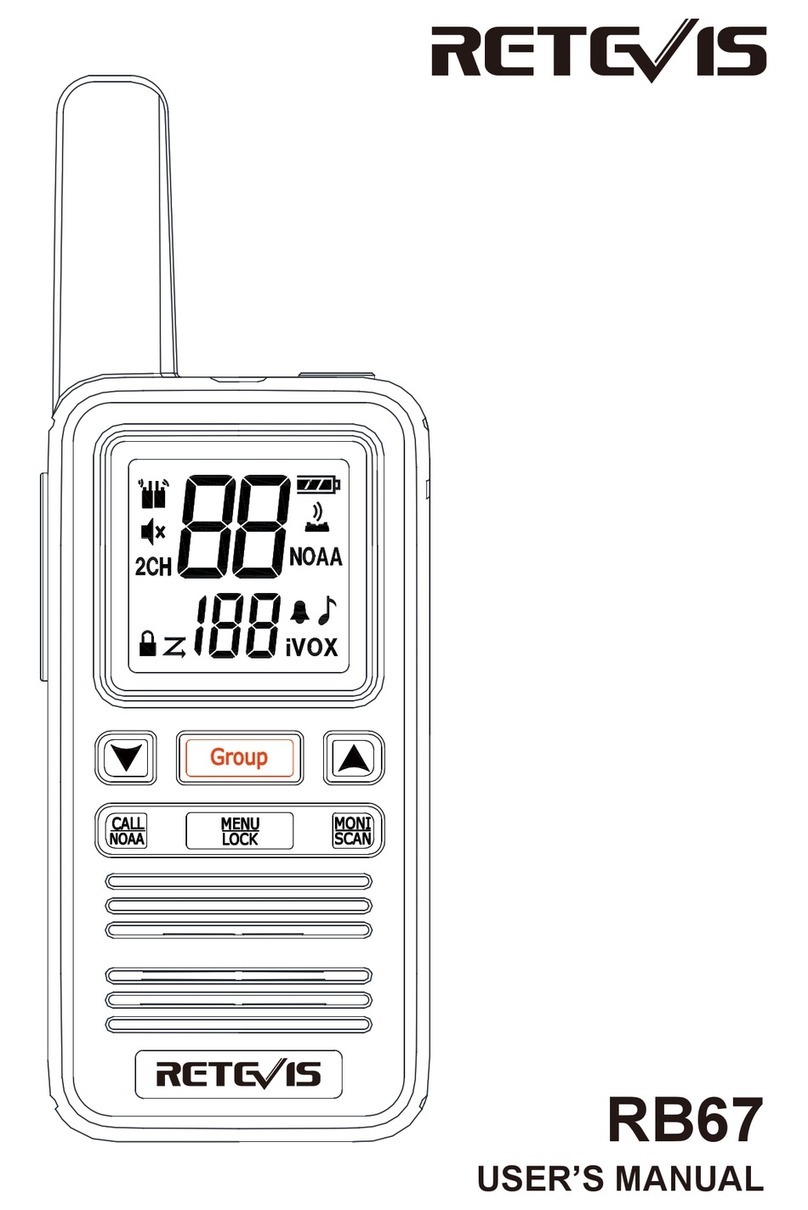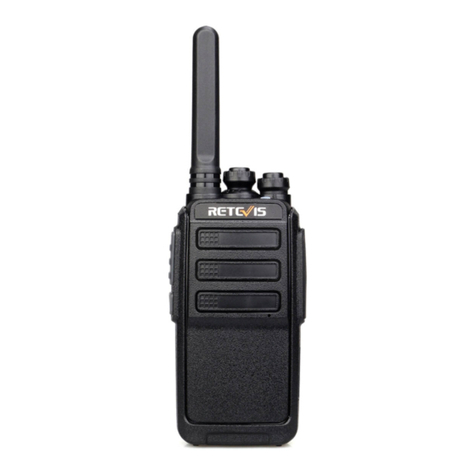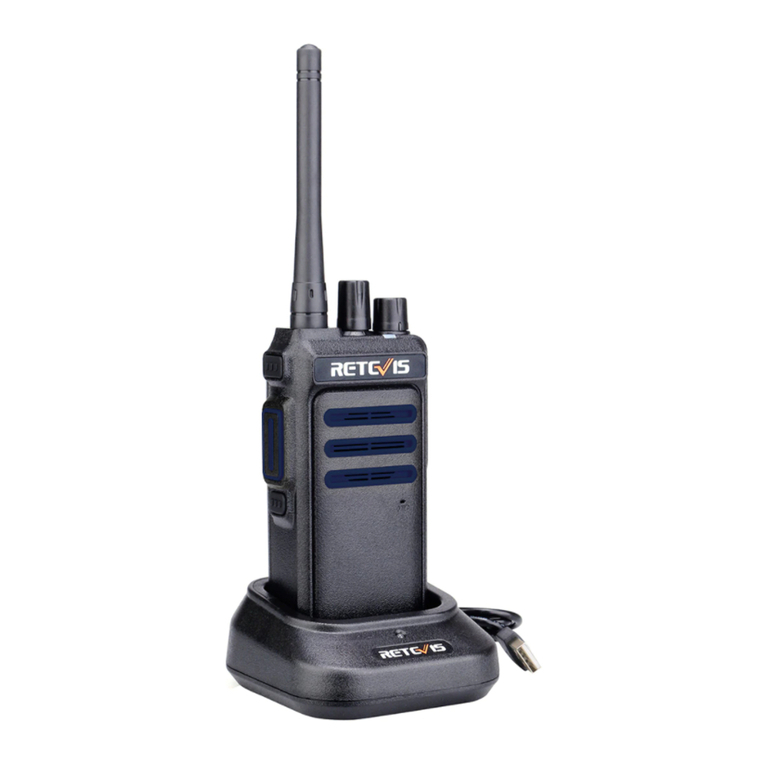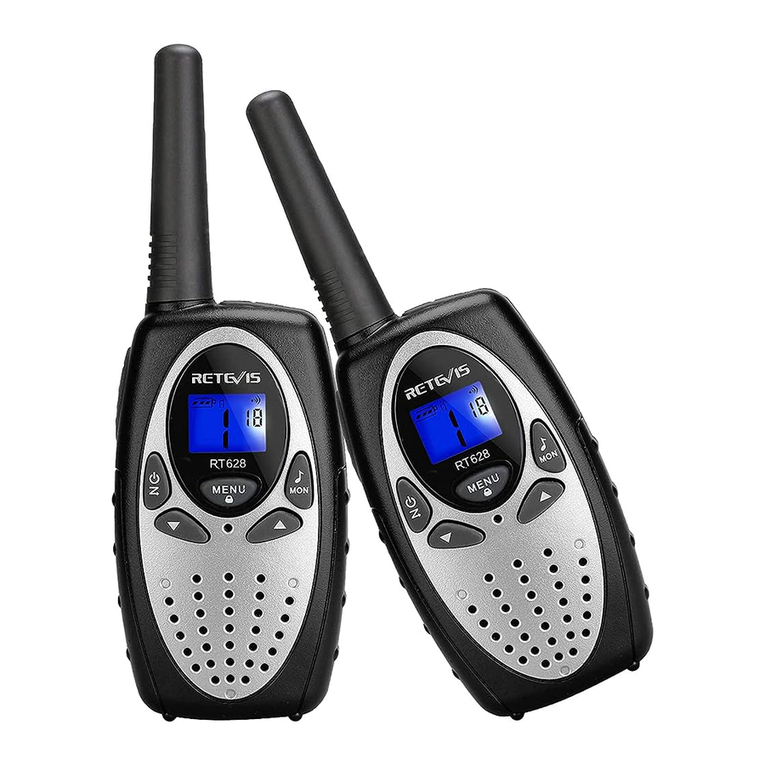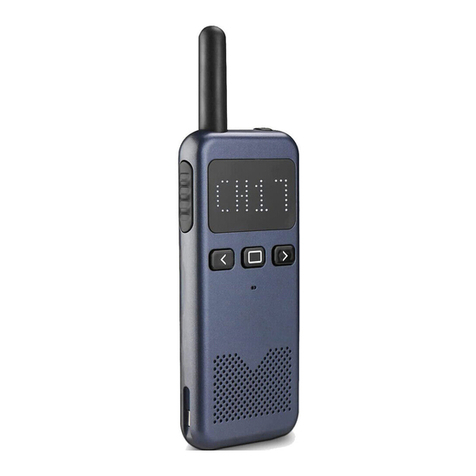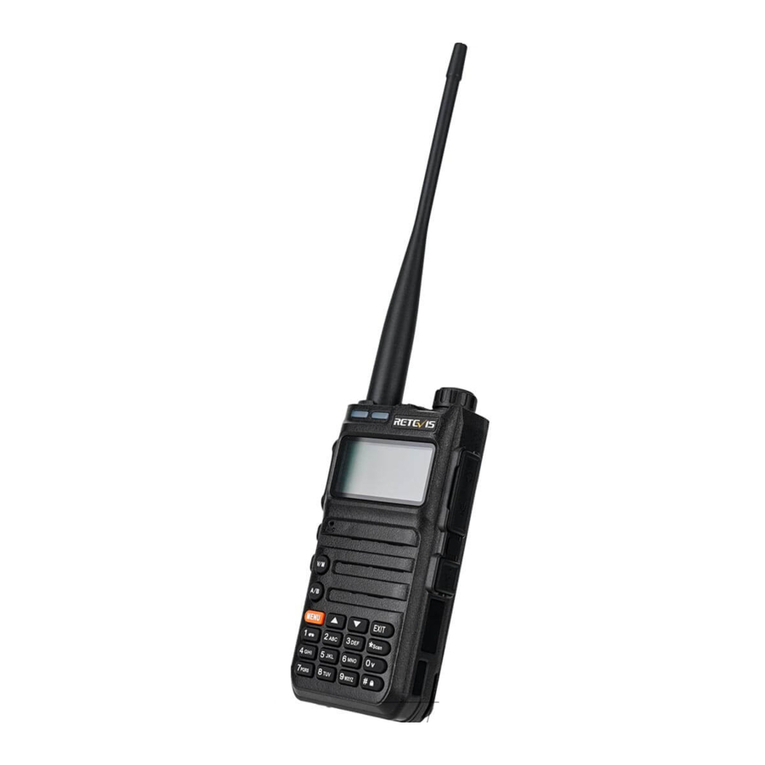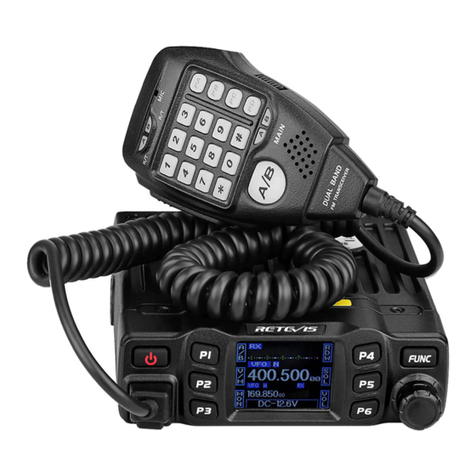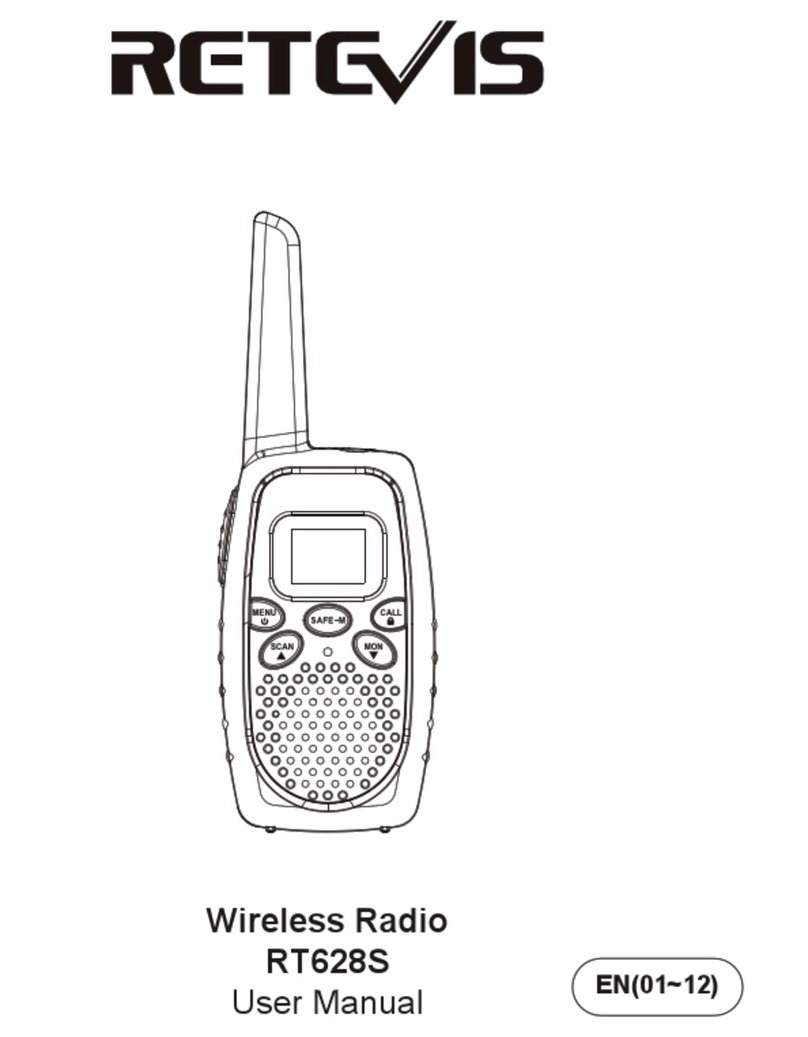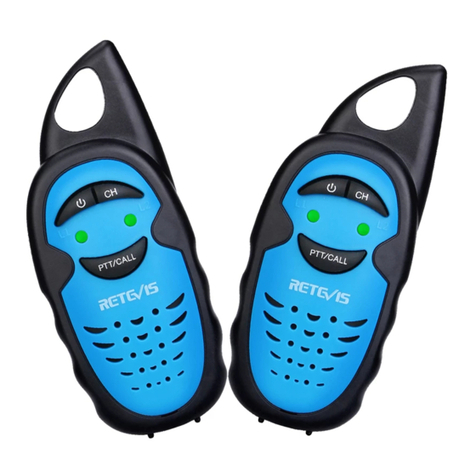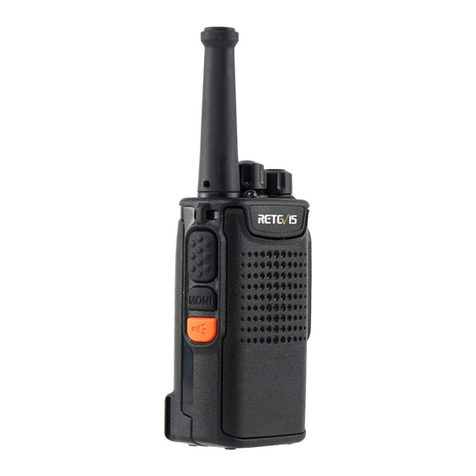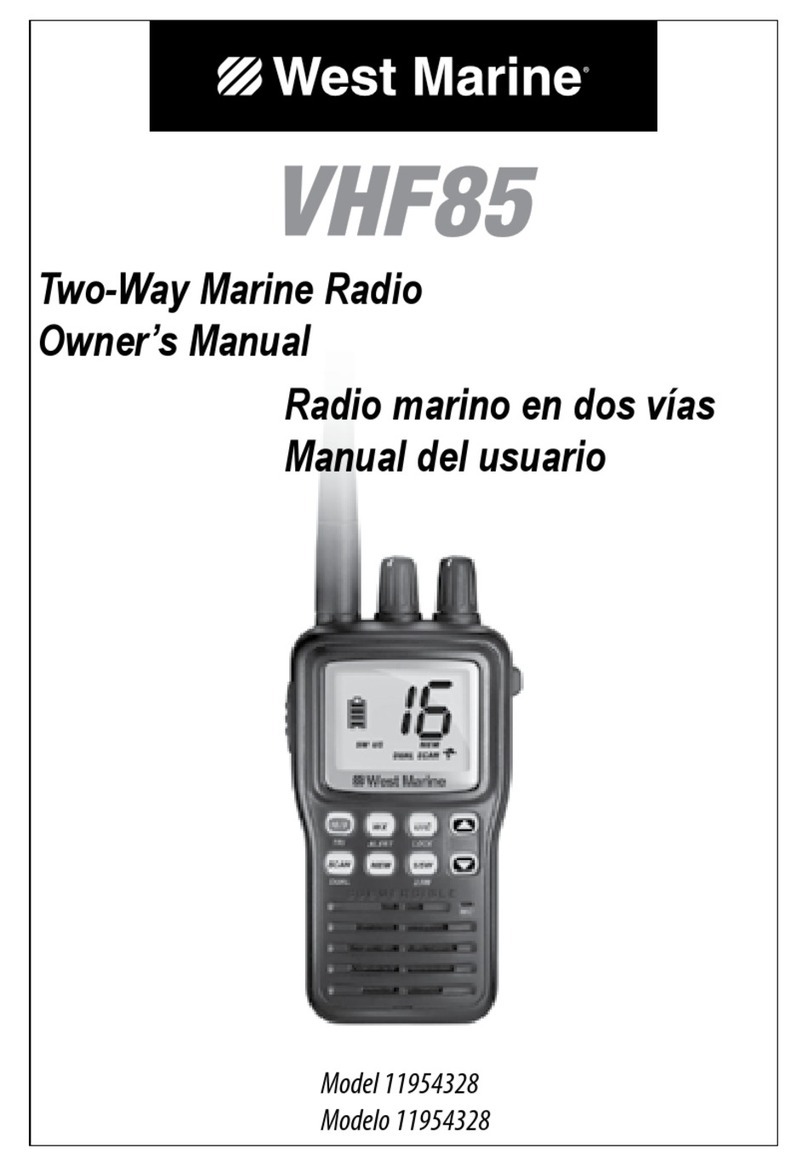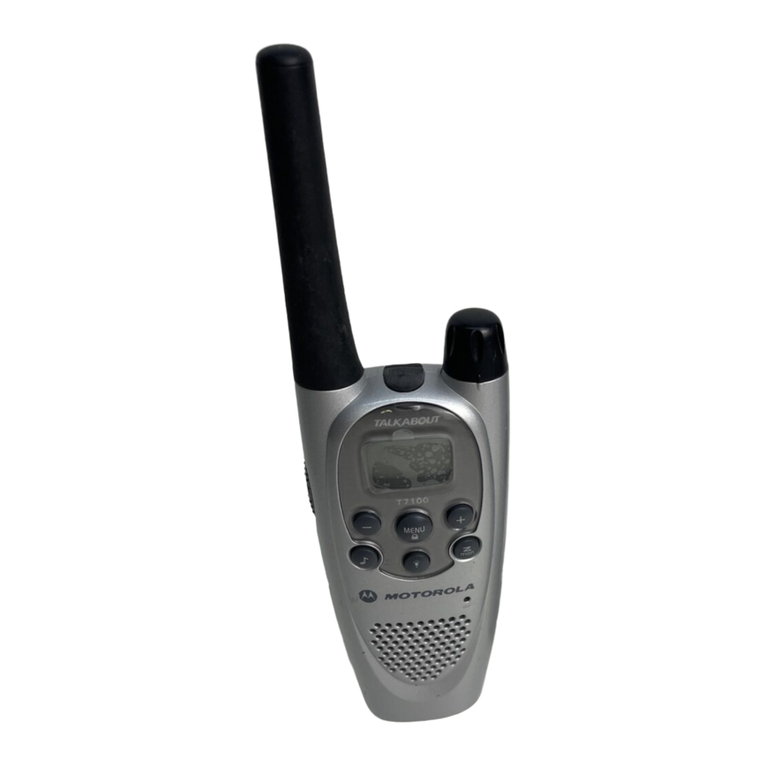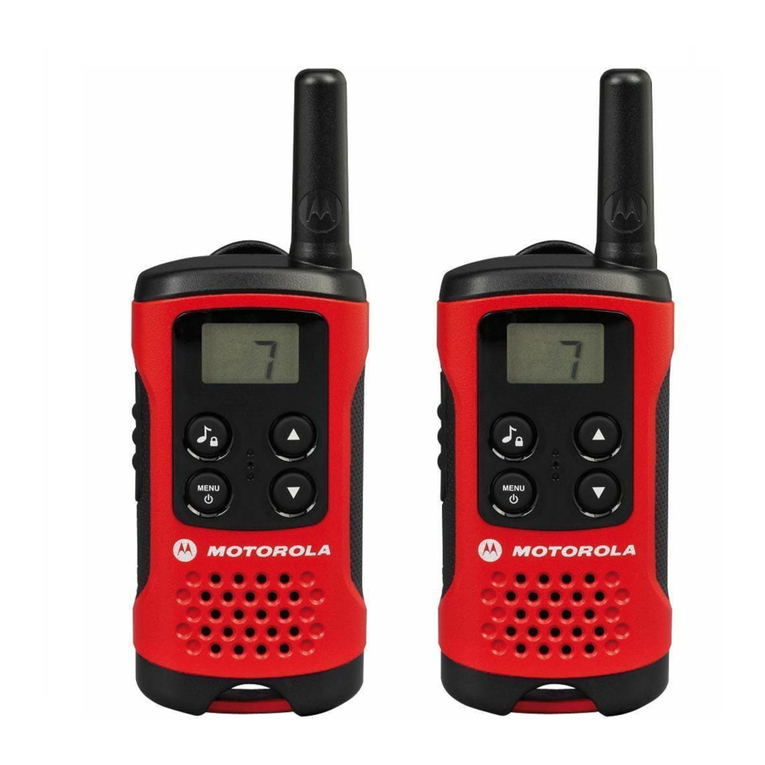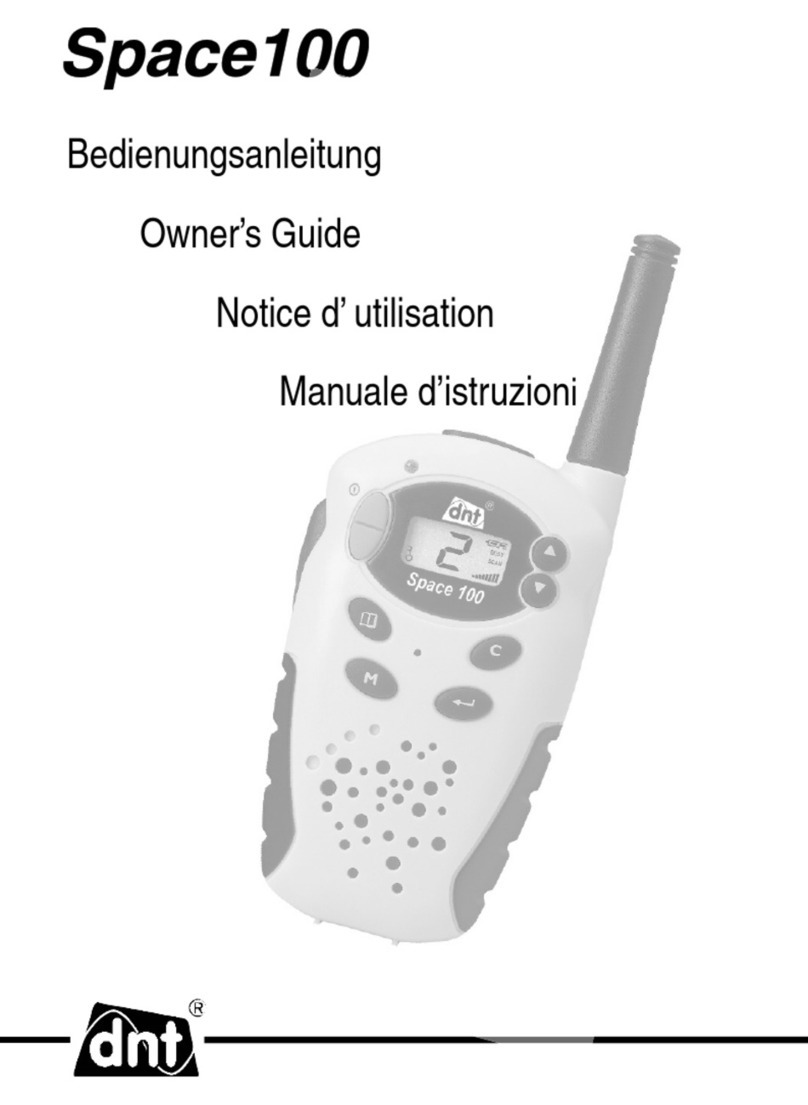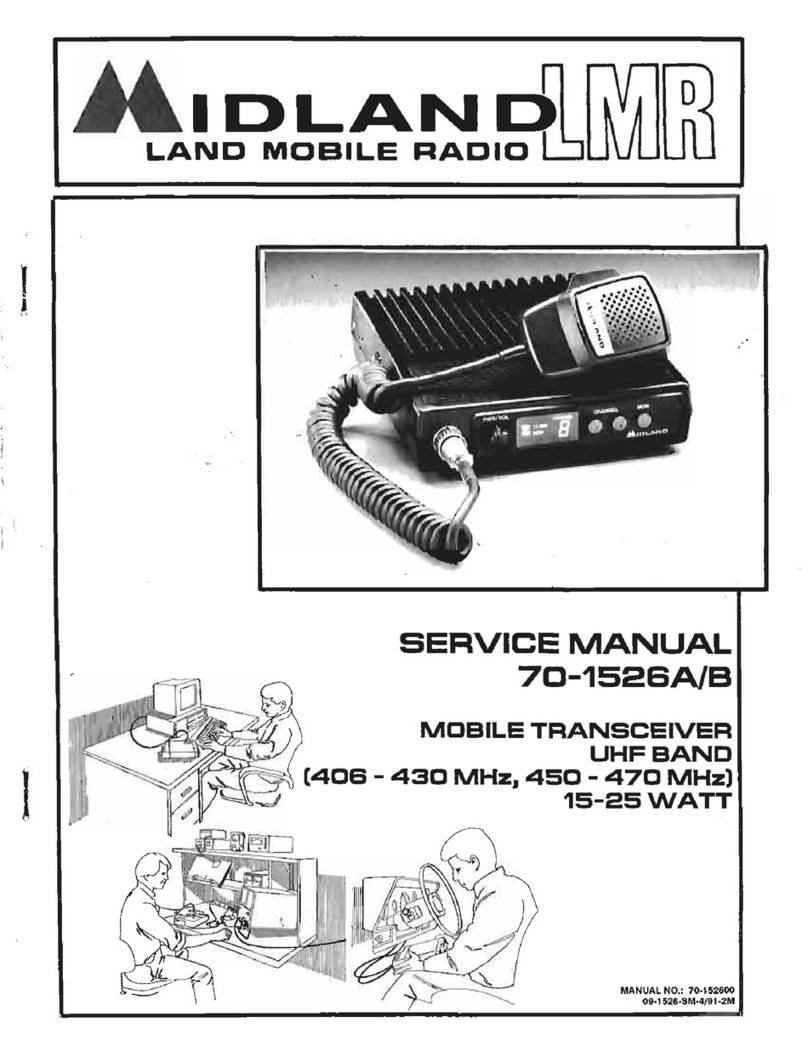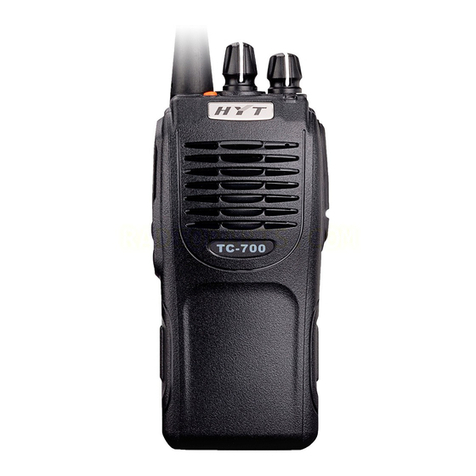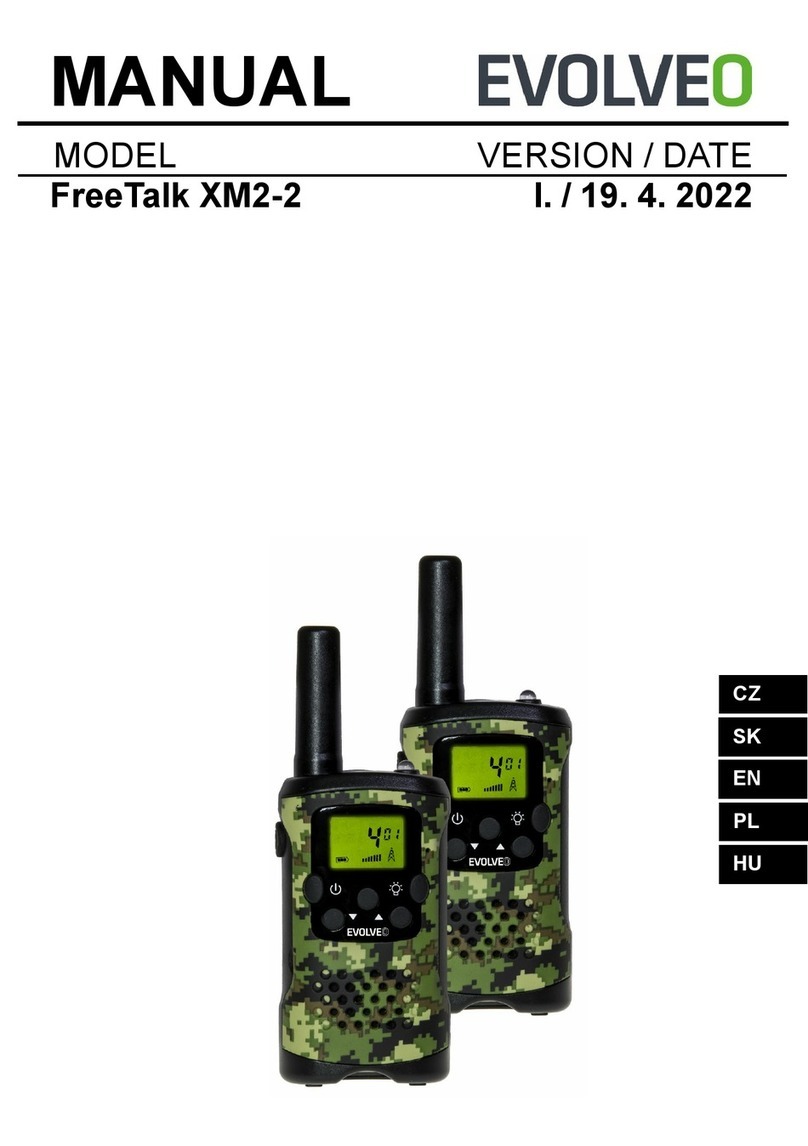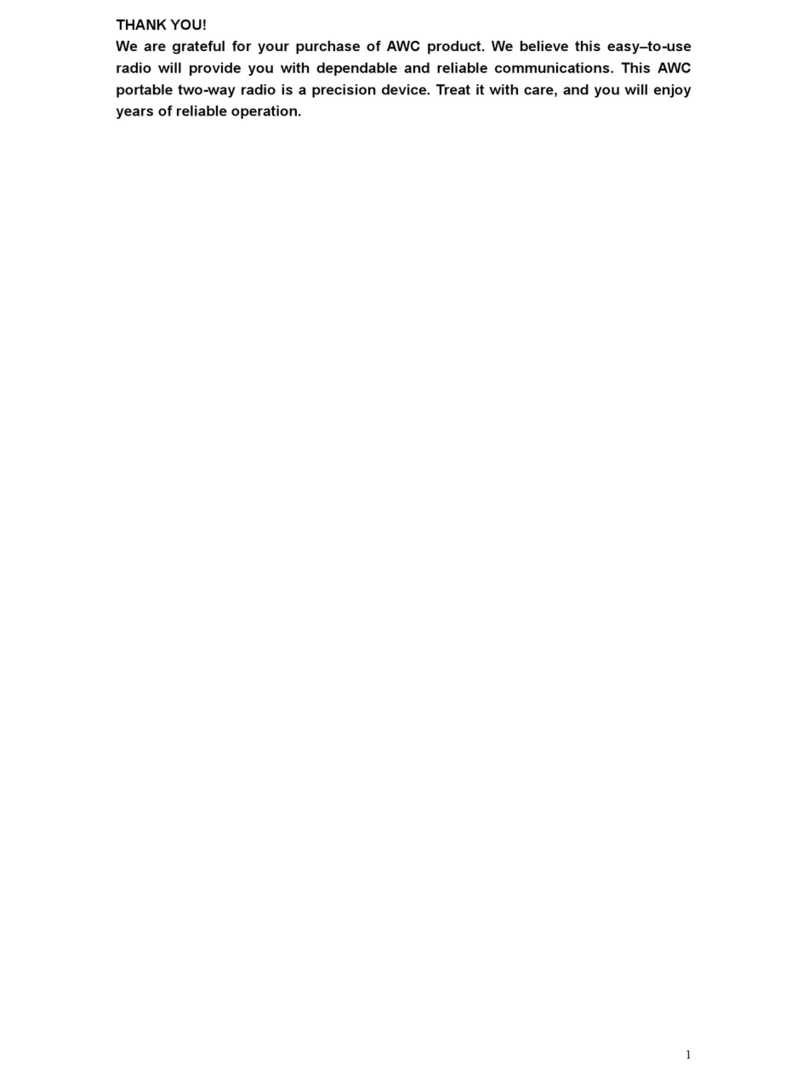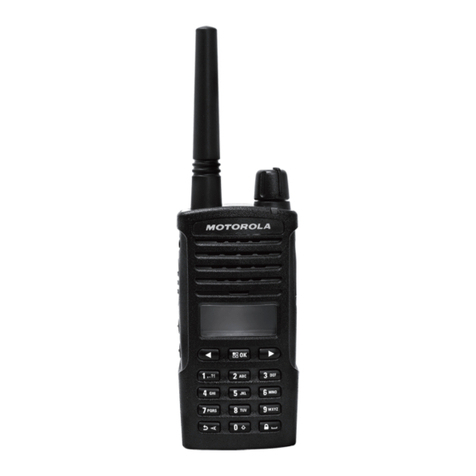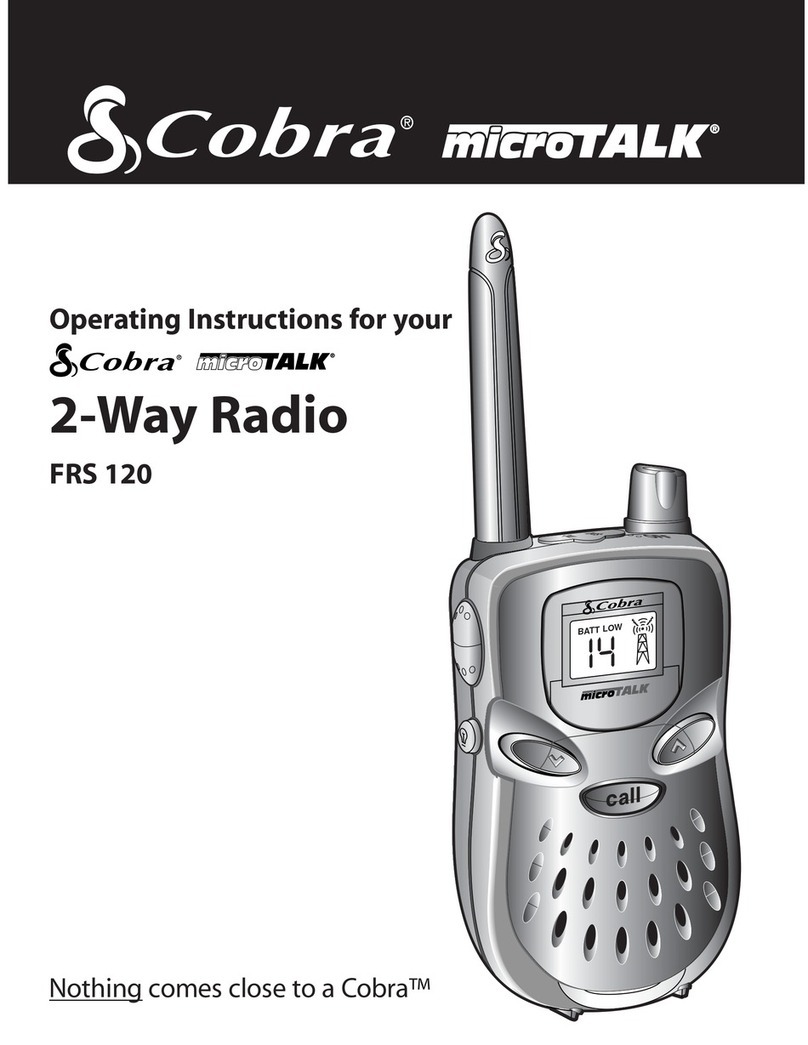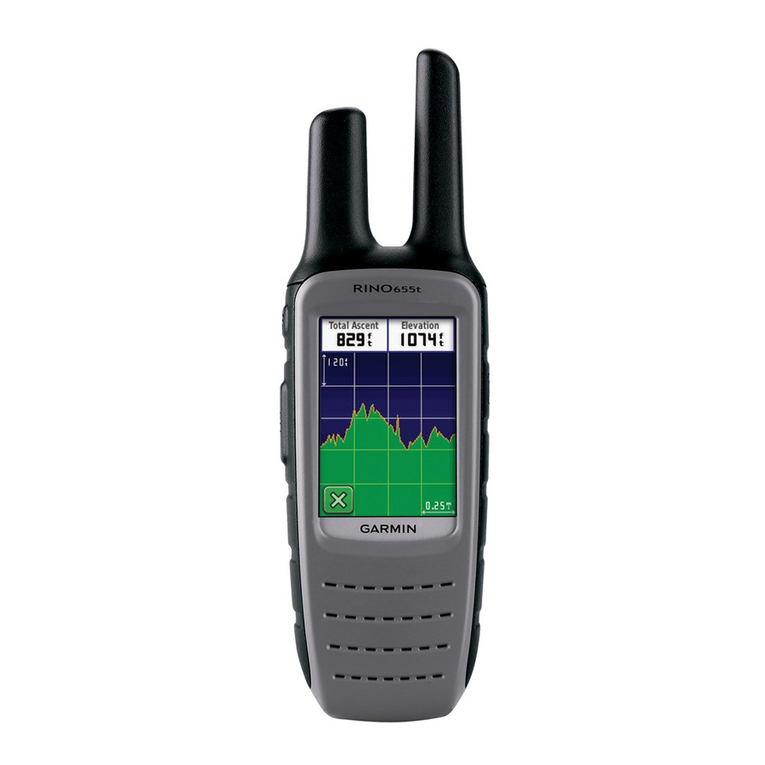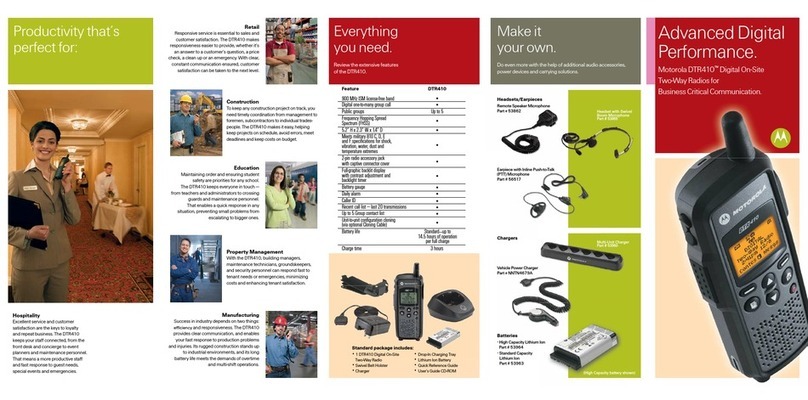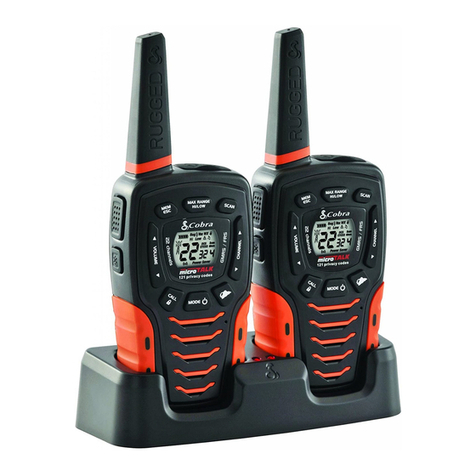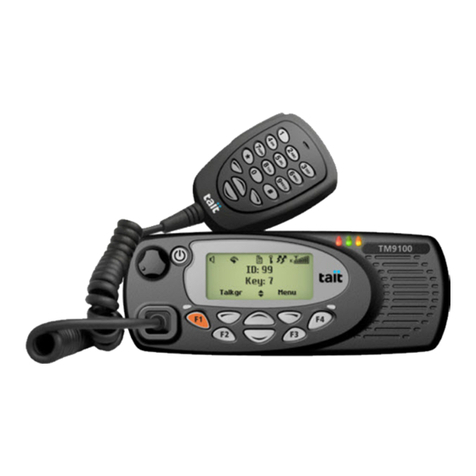
antenna gain shall not exceed the specified gain by
the manufacturer declared.
•DO NOT transmit for more than 50% of total radio
use time, more than 50% of the time can cause RF
exposure compliance requirements to be exceeded.
•During transmissions, your radio generates RF en-
ergy that can possibly cause interference with other
devices or systems. To avoid such interference,turn
off the radio in areas where signs are posted to do so.
•DO NOT operate the transmitter in areas that are
sensitive to electromagnetic radiation such as hos-
pitals, aircraft, and blasting sites.
•Portable Device, this transmitter may operate with
the antenna(s) documented in this filing in Push-to
-Talk and body-worn configurations. RF exposure
compliance is limited to the specific belt-clip and
accessory configurations as documented in this
filing and the separation distance between user and
the device or its antenna shall be at least 2.5 cm.
•Mobile Device, during operation, the separation
distance between user and the antenna subjects to
actual regulations, this separation distance will ens-
ure that there is sufficient distance from a properly
installed externally-mounted antenna to satisfy the
RF exposure requirements.
•Occupational/Controlled Radio, this radio is design-
ed for and classified as “Occupational/Controlled
Use Only”, meaning it must be used only during the
course of employment by individuals aware of the
hazards, and the ways to minimize such hazards;
NOT intended for use in a General population/
uncontrolled environment.
•General population/uncontrolled Radio, this radio is
designed for and classified as “General population/
uncontrolled Use”.
RF Exposure Compliance and Control Guidelines
and Operating Instructions
To control your exposure and ensure compliance with
the occupational/controlled environment exposure
limits, always adhere to the following procedures.
Guidelines:
•User awareness instructions should accompany the
device when transferred to other users.
•Do not use this device if the operational requirements
described herein are not met.
Operating Instructions:
•Transmit no more than the rated duty factor of 50%
of the time. To Transmit (Talk), push the Push to Talk
(PTT) button. To receive calls (listen), release the
PTT button. Transmitting 50% of the time, or less, is
important because the radio generates measurable
RF energy exposure only when transmitting in terms
of measuring for standards compliance.
•Transmit only when people outside the vehicle are
at least the recommended minimum lateral distance
away from a properly installed according to installa-
tion instructions, externally mounted antenna.
•When operating in front of the face, worn on the
body, always place the radio in a Retevis approved
clip, holder, holster, case, or body harness for this
product. Using approved body-worn accessories is
important because the use of Non-Retevis approved
accessories may result in exposure levels, which
exceed the IEEE/ICNIRP RF exposure limits.
Hand-held Mode
• Hold the radio in a vertical position with the micro-
phone (and other parts of the radio including
